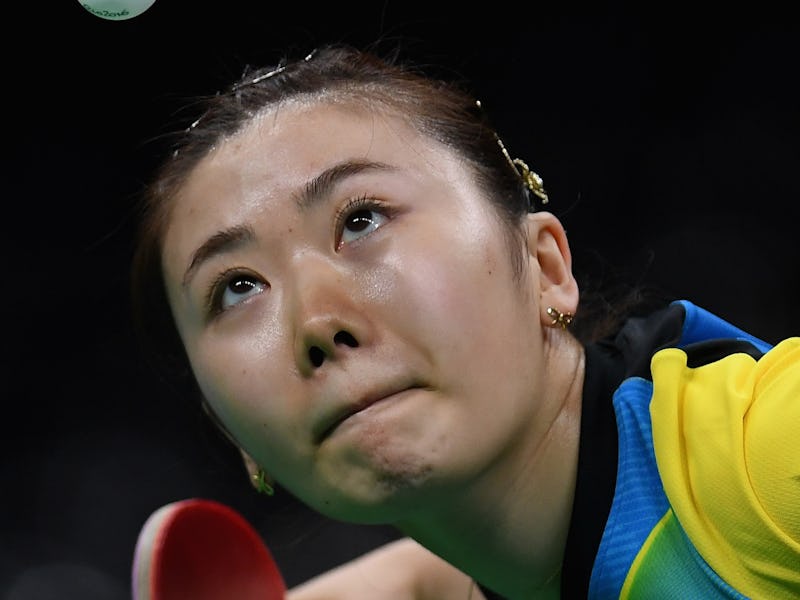Olympics Table Tennis Has Some Ball Problems
Yes, they’re less durable, but they don’t have to come via Hazmat truck anymore.

The Olympics is apparently dealing with its own version of deflategate.
Matches in Rio de Janeiro have ended with balls that look like they combusted from being smashed — even though players haven’t changed their pressure in any way. It’s a new and frustrating problem in a game marred by hiccups like a green pool and then, a fart-smelling green pool.
That’s because the official balls of 2016 are made of a new non-celluloid material that inhibits durability, says David Brasfield, a customer service representative at Paddle Palace, the official ball supplier of the United States Table Tennis team. What’s worse is that this problem isn’t limited to the DHS ball that’s being used in Rio de Janeiro; all new polyballs are facing similar ball-busting problems.
Despite the growing pains, the switch to non-celluloid balls was practically a necessity because of the severe fire hazard posed by celluloid balls. “We can now have a large quantity of balls come by air quickly, and we couldn’t have done that before,” points out Brasfield; previously, containers of celluloid balls had to be delivered by hazmat trucks with flammable solid warnings plastered all over them.
If you catch celluloid balls on fire, they burn extremely quickly — so probably let these Germans demonstrate for you, instead of trying it at home.
The only rule for the new ball material is that they can’t contain celluloid. Each ball still has to pass the same weight, pressure, bounce, and roll tests to determine that they are within the approved size ranges and balanced correctly. The perfect formula for non-celluloid balls may still be in the works, because even the best polyballs are less durable than the celluloid version. “But balls crack,” says Brasfield. “The pros don’t get too crazy about a ball that’s cracking — it happens.”
For the pros, the new balls came with a change in accepted ball diameter. Celluloid balls were permitted between 39.5 and 40.6 millimeters, but the new plastic balls have to be between 40.0 and 40.6 millimeters. Professionals preferred celluloid balls on the small end of the range (close to 39.6 millimeters) because they were easier to spin, says Brasfield.
“The new ones are dang good,” Brasfield praises the balls. But for Olympic athletes who swear by fast reaction times based on years of practice, it’s not going to be easy.
Lily Zhang of the USA practicing in Rio.